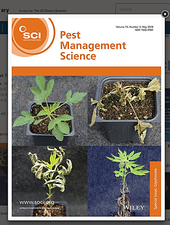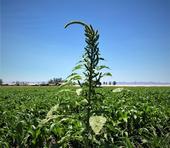- Author: Lynn M. Sosnoskie

Glyphosate was commercialized in 1974. Since then, it has become one of the most widely used and studied herbicides. According to Duke (2018b), almost 20,000 scientific publications and patents have included glyphosate as a focus; only 2,4-D surpasses it with respect to citations. The articles in the 5th issue of the 74th volume of Pest Management Science are no different; they all focus on this important (and controversial) molecule.This special issue arose from a day long symposium organized by Stephen O. Duke (University of Mississippi) and Keith Solomon (University of Guelph) that was held at the 252nd annual meeting of the American Chemical Society (Duke 2018a).
- Author: Lynn M. Sosnoskie
There are several meetings featuring the research of UC ANR Staff coming up this month (August 2018). Directions to sites can be obtained through the UCCE Merced Agronomy and Weed Science Upcoming Events web page: http://ucanr.edu/sites/agronomyweedscience/Upcoming_Events/
1. West Side Pest Management Update
This meeting will cover a variety of topics including vegetable insect and disease management, the biology and ecology of field bindweed, and the management of field bindweed in agronomic and specialty...
- Author: Lynn M. Sosnoskie

A drive around the San Joaquin Valley has revealed some fields with Palmer amaranth (Amaranthus palmeri) rising above the crop canopy.
A male Palmer amaranth in a corn field in Merced County
Palmer amaranth is a tall (growing up to 10 feet in height), dioecious (male and female flowers develop on separate plants), summer annual that grows rapidly and produces significant amounts of seed (upwards of 400,000-1,000,000 per female plant). The species is extremely competitive with many crops, including corn and cotton. In the...
- Author: Lynn M. Sosnoskie
Whether you need continuing education credits or are interested in keeping abreast of the latest weed science-related research occurring in California (or both), you should be aware that there are three excellet extension events coming up in July of 2018.
Diagnosing Herbicide Symptoms Short Course
When: July 10, 2018 - July 11, 2018
Where: UC Davis Bowley Plant Science Teaching Center, Extension Center Dr. Davis, CA 95616
What: The Diagnosing Herbicide Symptoms 2018 course is an intensive 1.5-day course focusing on how an herbicide injury situation can arise, what types of information can help diagnose herbicide problems...
- Author: Lynn M. Sosnoskie
It's getting hot and dry in the Central Valley and the movement of equipment in and out of fields/orchards/vineyards has the potential to stir up a significant amount of dust. Among its other impacts to agriculture (soil erosion, tissue damage, reduced photosynthesis, etc...), wind blown dust can reduce the efficacy of glyphosate, which is an important tool for the management of weeds in trees and vines, along rights-of-ways, and in glyphosate-tolerant agronomic crops (e.g. corn, cotton, alfalfa) in CA.
The adoption of glyphosate has been facilitated, at least in part, by it's relative lack of soil activity (Miller et al. 2013; Zhou et al. 2006). Glyphosate can become tightly adsorbed to soil...



